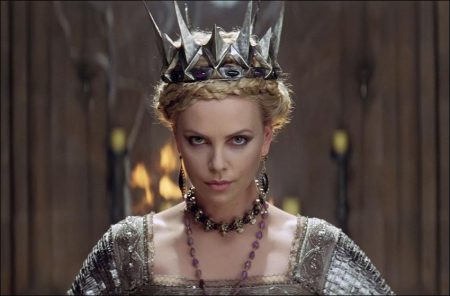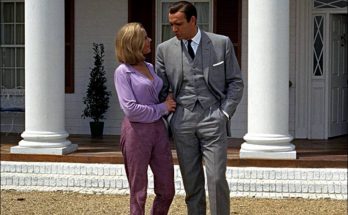Snow White: Prosthetic designs, makeup, hairstyles. For both the principal actors and their doubles, the daily routine of getting camera-ready sometimes began as other cast and crew were coming home from a night out. Due to the amount of prosthetics, hair and makeup- under the supervision of hair department head Luca Vanella and makeup department head Sharon Martin and costumes that needed to be applied and donned, some of the actors and key crew were up extremely early in the morning.
Prosthetics designer David White drew his initial designs by taking Sanders’ lead with what his director did-or more to the point-did not want from his dwarves. “Rupert didn’t want pointy ears or big chins and that over-the-top fantastical element,” remembers White. “His angle was very different, but his vision was quite extraordinary.” White gave Sanders mockups of each of the characters for his input, and they would discuss looks and alterations. Commends White: “Rupert takes you on a road that is so clear that you just have to follow. It totally works.”
White was responsible for the visual enhancement of the dwarves, accentuating certain features of the actors through detailed prostheses. These were not always to the extreme, but enough to make each one of them unique. He explains: “It was a question of getting all of the actors on board before it was established how we were going to handle certain aspects. I haven’t seen dwarves quite like this before, but they work so well in the movie.”
By using silicone bases, White and his team ensured that the actors were able to act through their prosthetics. “These prosthetics are so thin that actors can move underneath; they are very flexible,” says the designer. “However, the dwarf doubles are a different story, and a completely different build in terms of prosthetic makeup.”
The principal actors’ doubles needed to have prosthetics applied to make them look just like the actors. However, size and head-shape differences required a completely different set of prosthetics. “Some of the doubles’ prosthetics are more masklike, but still very thin and flexible and practical,” comments White. “We accommodated all of the different elements and copied the principal actors’ looks-with all of their prosthetics-on to another person who was a totally different design. It’s a good thing all of our characters are such strong designs; they read from a distance and look fantastic. I’m amazed how close the camera can actually get to them.”
All of the dwarves had different prosthetic designs, makeup, hairstyles and facial hair. Therefore, the actors were normally in the prosthetics trailer as early as 2:30 or 3:00 a.m. “There were a lot of different processes to get them camera-ready, and there was an enormous amount of jumping around with eight dwarves in one trailer,” laughs White. Not enough work? With eight dwarves and eight doubles, the crew had a minimum of 16 dwarves on a given workday, not taking into account any stunt doubles or stand-ins needed for certain scenes.
Considering the amount of time these performers had to sit in their respective chairs, White put a great deal of consideration into which artist from his department would be assigned to each actor, and where the actors were positioned within the trailers. “I don’t think I’ve ever had a trailer full of British actors of that caliber; it was quite extraordinary,” says White. “There was a lot of banter and a great vibe, but all of the gentlemen have a discipline when it comes to work and were good sports about coming in so early. They each had their different ways of dealing with it-some napped, some read, some listened to music…all sorts of tricks were used to get by.”
Despite the prep work, the actors who portray the dwarves were up for the challenge at hand. “It was tough but when we finished and you saw the quality of their work, you knew it was worth every second,” says Winstone. “Genius.”
Prosthetics used to be made from the standard foam latex, but as the material is so dense and has no translucency whatsoever, it has to be painted to create an effect. Because the use of latex puts more pressure on the lighting scenarios, silicone is the preferred material of the day. White commends its fantastic qualities, noting, “We can change the density and the color to get it exactly right for the actor or actress.”
With a minimum of eight principal dwarves and eight doubles all needing prosthetics for each new shooting day, White and his team created more than 400 different sets of prosthetics for all of these artists, and that went up by the day. For example, if every single eyebrow on a principal prosthetic was manually punched 300 times, that resulted in 600 punches on every single piece, times 400!
Related Link: View the Full Production Notes for Snow White and the Hunstman
Views: 96




